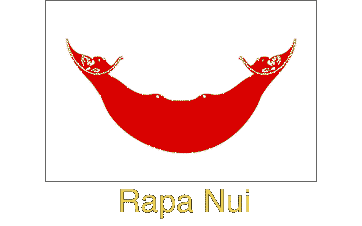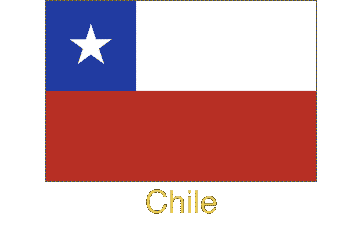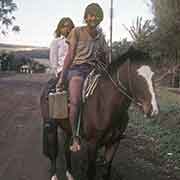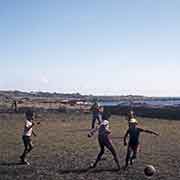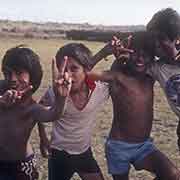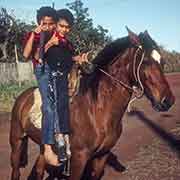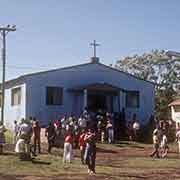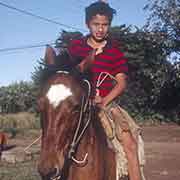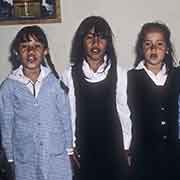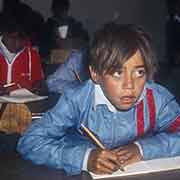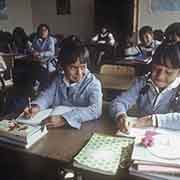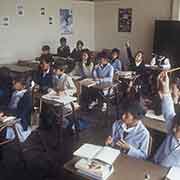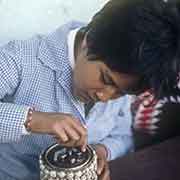Photos of young people of Rapa Nui
Young people of Rapa Nui
The original inhabitants of Rapa Nui are the descendants of eastern Polynesian people who probably arrived on the island in around 800 to 900 CE. According to oral tradition, it was in an expedition led by the chief Hotu Matu’a, who took his family, a large crew and everything they needed to survive, in a single huge double-hulled canoe. He was from Marae Renga, which is believed was in a region called “Hiva”. It is now assumed they came from Pitcairn, over 2,000 kilometres to the west. In those days Pitcairn was inhabited and probably shared a culture and language with Mangareva, an island now in the French Polynesian Gambier group 540 kilometres to the northwest; they may have originally come from there. Hotu Matua’s captain Tu’u ko Iho founded the settlement, and over the centuries the people lived in complete isolation and developed their unique culture. The most spectacular expression of it is the hundreds of monolithic human statues, “moai”, that were carved between, it is estimated, the years 1000 and mid-eighteenth century.
you may then send it as a postcard if you wish.
It is estimated that in the 17th century the population had grown to around 15,000. It appears that overpopulation and overexploitation of the environment caused its collapse. In one century it dropped to 2,000-3,000. In the 19th century, the population almost wholly collapsed as a result of the Peruvian slave deportations in the 1860s and subsequent epidemics. In the aftermath, the Rapanui people came under extensive outside influence from neighbouring Polynesian languages such as Tahitian. Hundreds of Easter Islanders who left for Mangareva in the 1870s and 1880s to work as servants or labourers adopted the local form of Tahitian-Pidgin, and this became the basis for the modern Rapanui language when the surviving immigrants returned to their almost deserted home island.
In 1888 Easter Island was annexed by Chile and over the years Chilean continentals have settled on the island, to such an extent they now form 55% of the population. Most of them only speak Spanish, and there are now many Spanish words in the present Rapanui speech. Children go to school, where only Spanish is spoken and as a result, fewer of them learn Rapanui at an early age. There are even grammar changes in the Polynesian language, with word order more like in Spanish. The present generation now speaks Spanish as their first language but may learn Rapanui later in life. The old Rapanui language before the Tahitian and later Spanish influence would now be incomprehensible to them. Just like the rongorongo script of the island, that now is undecipherable.
